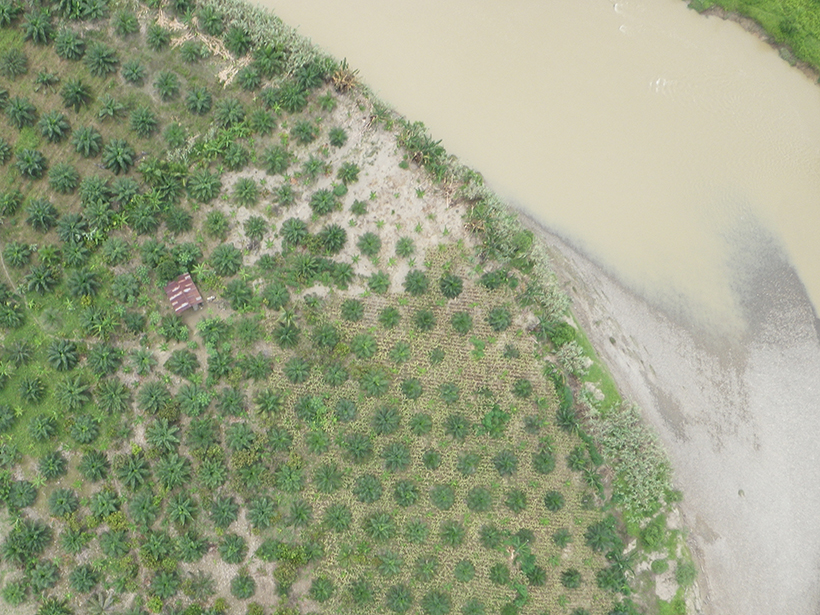Source: Earth’s Future
The global production of palm oil has more than doubled since the turn of the century: The oil accounts for nearly a third of the world’s vegetable oil use and appears in commercial products ranging from shampoo to biodiesel.
The tropics support the growth of the palm oil industry, much to the detriment of tropical forest ecosystems. In Malaysia and Indonesia alone, agriculture converted 9.5 million forested hectares into oil palm plantations between 1990 and 2010. This land conversion spurs drastic environmental change and reduces the natural benefits that humans gain from the land, especially in riparian ecosystems that border streams and rivers. Pollination, water filtration, and erosion control are some of the ecosystem services that suffer when forests become oil palm plantations.
According to new research by Horton et al., however, many of these services could be retained if plantations implemented riparian buffers—protected habitat along riverbanks—instead of planting crops right up to the water’s edge. There are benefits for farmers too: The study suggests that the riparian buffers could, over time, actually increase crop yield.
The researchers simulated river channel migration and bank erosion over 25-year intervals for 100 years. Drawing on remote sensing imagery and estimates of plantation productivity, they used a numerical model to estimate how physical changes in the river’s position affected economic returns from oil palm crops on the floodplain. Each model ran under two scenarios: with a habitat buffer and without one.
The results of the river channel migration simulations suggest that the removal of riverbank vegetation could cause the river to shift course when it otherwise might not, especially over longer timescales. Over 100 simulated years, the amount of land lost under the no-buffer scenario was significantly higher than the losses with a riparian buffer. Along reaches where modeled erosion rates were particularly high, the absence of a forested buffer cost a plantation the equivalent of three rows of oil palms beside the river.
The results indicate that on timescales longer than a decade, plantation returns may increase in response to the habitat buffer. Although yields may initially suffer because of reduced planting space along the water, native vegetation stretching 10–30 meters from the bank can ultimately prevent erosion and help protect the plantation from flood damage.
Farmers will likely always struggle to balance conservation and profitability, but the recent work by the team suggests that in the long term, adding a dose of river management to oil palm agriculture could have significant economic and environmental impacts. (Earth’s Future, https://doi.org/10.1029/2018EF000874, 2018)
—Aaron Sidder, Freelance Writer
Citation:
Sidder, A. (2018), Conserving riverside habitat could bolster bottom lines, Eos, 99, https://doi.org/10.1029/2018EO106559. Published on 02 October 2018.
Text © 2018. The authors. CC BY-NC-ND 3.0
Except where otherwise noted, images are subject to copyright. Any reuse without express permission from the copyright owner is prohibited.

